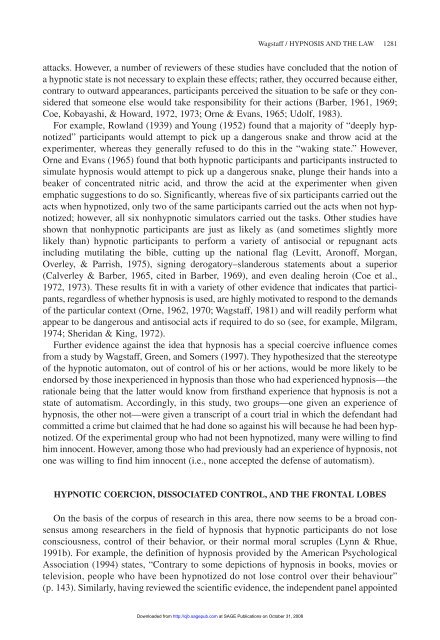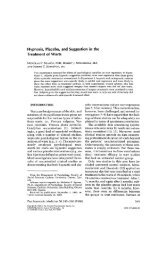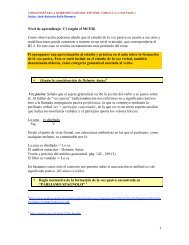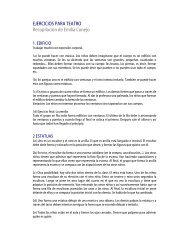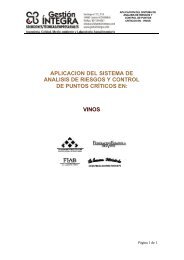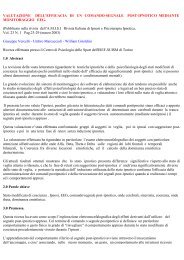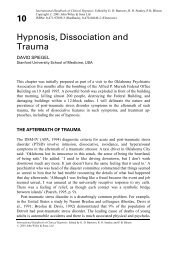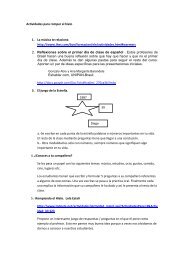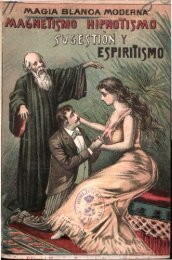Hypnosis and the Law: Examining the Stereotypes
Hypnosis and the Law: Examining the Stereotypes
Hypnosis and the Law: Examining the Stereotypes
You also want an ePaper? Increase the reach of your titles
YUMPU automatically turns print PDFs into web optimized ePapers that Google loves.
Wagstaff / HYPNOSIS AND THE LAW 1281<br />
attacks. However, a number of reviewers of <strong>the</strong>se studies have concluded that <strong>the</strong> notion of<br />
a hypnotic state is not necessary to explain <strong>the</strong>se effects; ra<strong>the</strong>r, <strong>the</strong>y occurred because ei<strong>the</strong>r,<br />
contrary to outward appearances, participants perceived <strong>the</strong> situation to be safe or <strong>the</strong>y considered<br />
that someone else would take responsibility for <strong>the</strong>ir actions (Barber, 1961, 1969;<br />
Coe, Kobayashi, & Howard, 1972, 1973; Orne & Evans, 1965; Udolf, 1983).<br />
For example, Rowl<strong>and</strong> (1939) <strong>and</strong> Young (1952) found that a majority of “deeply hypnotized”<br />
participants would attempt to pick up a dangerous snake <strong>and</strong> throw acid at <strong>the</strong><br />
experimenter, whereas <strong>the</strong>y generally refused to do this in <strong>the</strong> “waking state.” However,<br />
Orne <strong>and</strong> Evans (1965) found that both hypnotic participants <strong>and</strong> participants instructed to<br />
simulate hypnosis would attempt to pick up a dangerous snake, plunge <strong>the</strong>ir h<strong>and</strong>s into a<br />
beaker of concentrated nitric acid, <strong>and</strong> throw <strong>the</strong> acid at <strong>the</strong> experimenter when given<br />
emphatic suggestions to do so. Significantly, whereas five of six participants carried out <strong>the</strong><br />
acts when hypnotized, only two of <strong>the</strong> same participants carried out <strong>the</strong> acts when not hypnotized;<br />
however, all six nonhypnotic simulators carried out <strong>the</strong> tasks. O<strong>the</strong>r studies have<br />
shown that nonhypnotic participants are just as likely as (<strong>and</strong> sometimes slightly more<br />
likely than) hypnotic participants to perform a variety of antisocial or repugnant acts<br />
including mutilating <strong>the</strong> bible, cutting up <strong>the</strong> national flag (Levitt, Aronoff, Morgan,<br />
Overley, & Parrish, 1975), signing derogatory–sl<strong>and</strong>erous statements about a superior<br />
(Calverley & Barber, 1965, cited in Barber, 1969), <strong>and</strong> even dealing heroin (Coe et al.,<br />
1972, 1973). These results fit in with a variety of o<strong>the</strong>r evidence that indicates that participants,<br />
regardless of whe<strong>the</strong>r hypnosis is used, are highly motivated to respond to <strong>the</strong> dem<strong>and</strong>s<br />
of <strong>the</strong> particular context (Orne, 1962, 1970; Wagstaff, 1981) <strong>and</strong> will readily perform what<br />
appear to be dangerous <strong>and</strong> antisocial acts if required to do so (see, for example, Milgram,<br />
1974; Sheridan & King, 1972).<br />
Fur<strong>the</strong>r evidence against <strong>the</strong> idea that hypnosis has a special coercive influence comes<br />
from a study by Wagstaff, Green, <strong>and</strong> Somers (1997). They hypo<strong>the</strong>sized that <strong>the</strong> stereotype<br />
of <strong>the</strong> hypnotic automaton, out of control of his or her actions, would be more likely to be<br />
endorsed by those inexperienced in hypnosis than those who had experienced hypnosis—<strong>the</strong><br />
rationale being that <strong>the</strong> latter would know from firsth<strong>and</strong> experience that hypnosis is not a<br />
state of automatism. Accordingly, in this study, two groups—one given an experience of<br />
hypnosis, <strong>the</strong> o<strong>the</strong>r not—were given a transcript of a court trial in which <strong>the</strong> defendant had<br />
committed a crime but claimed that he had done so against his will because he had been hypnotized.<br />
Of <strong>the</strong> experimental group who had not been hypnotized, many were willing to find<br />
him innocent. However, among those who had previously had an experience of hypnosis, not<br />
one was willing to find him innocent (i.e., none accepted <strong>the</strong> defense of automatism).<br />
HYPNOTIC COERCION, DISSOCIATED CONTROL, AND THE FRONTAL LOBES<br />
On <strong>the</strong> basis of <strong>the</strong> corpus of research in this area, <strong>the</strong>re now seems to be a broad consensus<br />
among researchers in <strong>the</strong> field of hypnosis that hypnotic participants do not lose<br />
consciousness, control of <strong>the</strong>ir behavior, or <strong>the</strong>ir normal moral scruples (Lynn & Rhue,<br />
1991b). For example, <strong>the</strong> definition of hypnosis provided by <strong>the</strong> American Psychological<br />
Association (1994) states, “Contrary to some depictions of hypnosis in books, movies or<br />
television, people who have been hypnotized do not lose control over <strong>the</strong>ir behaviour”<br />
(p. 143). Similarly, having reviewed <strong>the</strong> scientific evidence, <strong>the</strong> independent panel appointed<br />
Downloaded from<br />
http://cjb.sagepub.com at SAGE Publications on October 31, 2008


